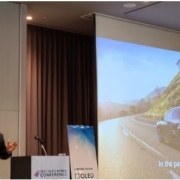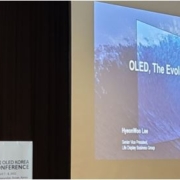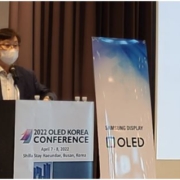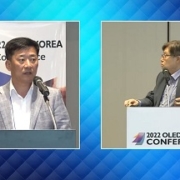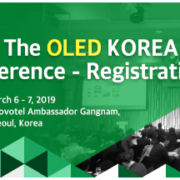The OLED Korea Conference 2019, organized by UBI Research, will be held on March 6 and 7 at Novotel Ambassador in Gangnam.
The OLED Korea for the fifth consecutive year, the event includes many high profile speakers by having representatives of the industry on board
The conference will feature future forecast of panel market with executives from leading panel makers Samsung and LG Display, another major developers JOLED and TCL, which are pioneering markets for OLED panels with inkjet technologies
In order for OLED industries to grow, not only panel manufacturers but also variety of parts materials, equipment, and technologies need to be developed.
The conference will also include presentations from leading industry analysts from a variety of part and equipment firms.
Particularly, scheduled the session by Nanosys, a company specialized in QD, which will provide an important opportunity to forecast the growth of the QD-OLED business that Samsung Display is discovering as its next-generation business.
The OLED KOREA conference had over 200 attendees at last year.
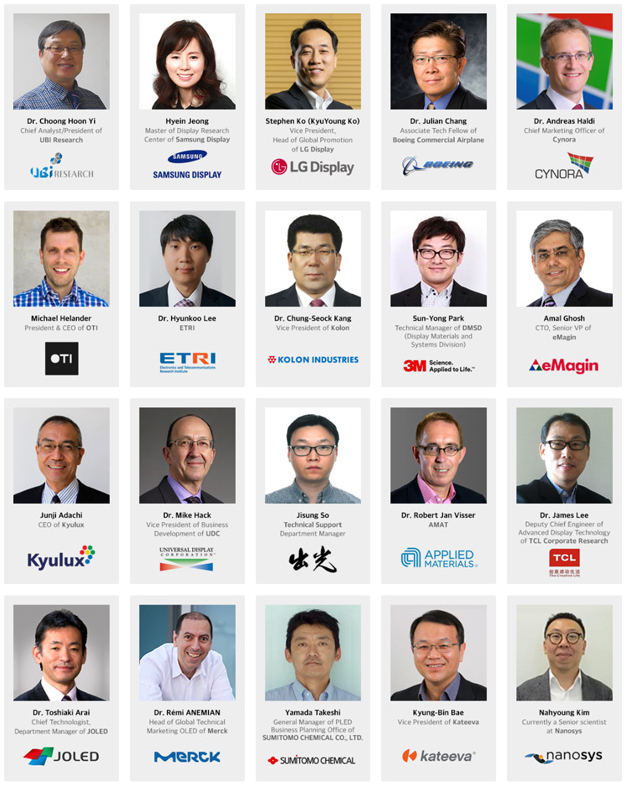
[Program]
Can the OLED market continue to grow?
OLED Industry and Market Forecast in 2019
Dr. Choong Hoon YI, UBI Research
How will Korean panel companies attract the OLED industry?
Future Key Technology of OLED
Hyein Jeong, Samsung Display
How to create new value in display industry, LCD or OLED?
KY(Stephen) Ko, LG Display
Soluble OLED technology for making large-sized TV market
The Latest Breakthrough of Printing Technology for Next Generation Premium TV Application
Dr. Jueng-Gil (James) Lee, TCL
Strategic Market Creation of Printed OLED Display
Dr. Toshiaki Arai, JOLED
OLEDs state-of-the-art materials: Merck development and latest status
Dr. Remi Anemian, Merck
Latest Development of Soluble OLED Materials and Application to Mid-to-Large Panel Fabrication
Takeshi Yamada, Sumitomo Chemical
Inkjet Printing for Flexible and Large-size OLEDs Manufacturing
Kyung-Bin Bae, Kateeva
Next generation OLED application
OLED Micro-displays for VR/AR Applications
Dr. Amal Ghosh, eMagin
Airborne System & Cabin Integration enhance flight experiences and operations
Dr. Julian Chang, Boeing
Development status of fluorescence and phosphorescent materials
Future Directions for Phosphorescent OLED Displays
Dr. Mike Hack, UDC
Development history and recent development progress of Blue OLEDs in Idemitsu Kosan
Jisung So, Idemitus Kosan
What level of next generation emitting materials has been developed?
TADF – Recent progress in developing highly efficient blue emitter materials
Dr. Andreas Haldi, Cynora
Hyperfluorescence™, a Game Changing Technology of OLED Display
Junji Adachi, Kyulux
Film materials essential for OLED module manufacturing
Colorless Polyimides (CPI®) for Flexible Electronics
Dr. Chung-Seock Kang, Kolon
Optically Clear Adhesives for Future OLED Displays
Sun-Yong Park, 3M
New technology to prepare OLED future
Quantum Dots: Technology Platform for Future Displays
Dr. Nahyoung Kim, Nanosys
OLED Technologies for AR/VR
Dr. Hyunkoo Lee, ETRI
TBD
Dr. Robert Jan Visser, AMAT
Material Advances for Transparent OLEDs
Dr. Michael Helander, OTI








